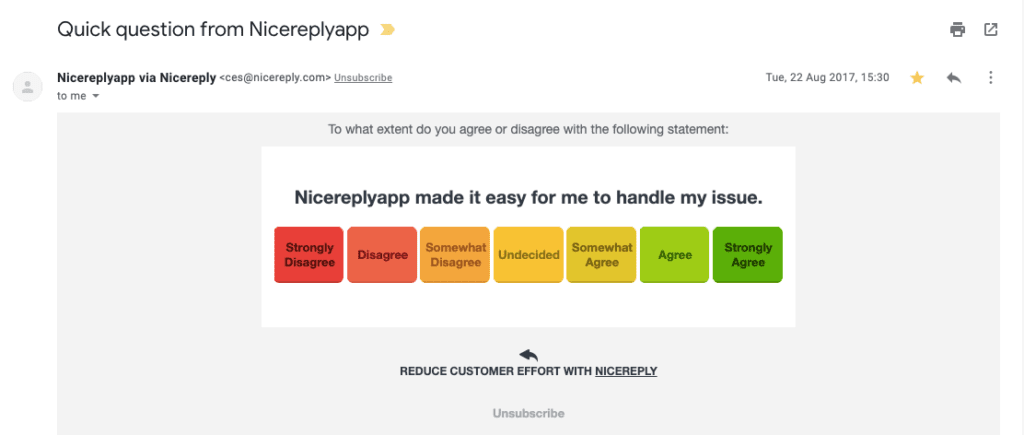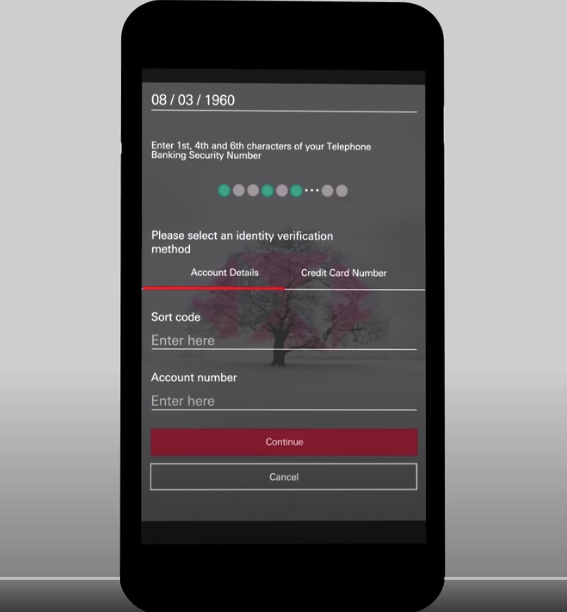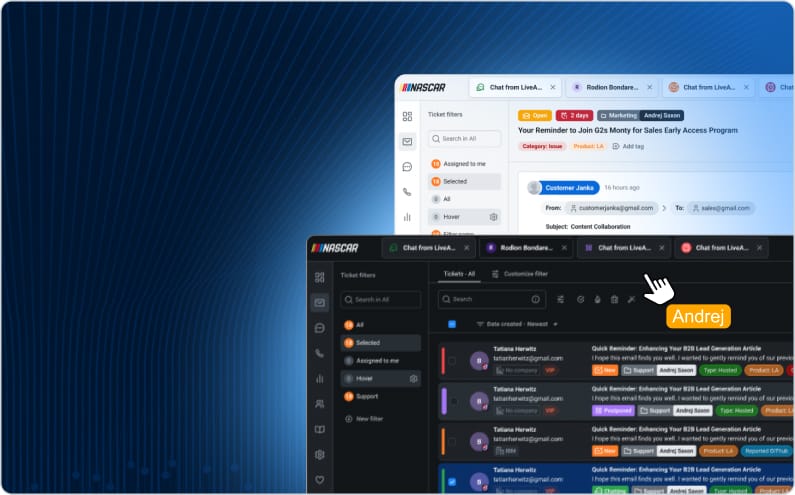Nowadays, we’re used to everything being simple and convenient when it comes to many aspects of modern living. From agile processes, omnichannel support, to even optimization — we want everything to happen in just one click, without delay, and without any steps in between. We look for simple solutions, and we appreciate everything that is labeled “less”– wire(less), contact(less), you name it.
Even though customers want everything almost instantly, and without much effort, most companies still lack a basic overview of their Customer Effort Score performance. According to data gathered by Nicereply, only 25% of companies use CES to simplify their workflow processes. This figure is even more alarming considering CES is the metric that correlates the most with purchase frequency, cross-selling, and upselling.
There’s no doubt that this correlation makes sense– the easier it is to interact with a company, the more profitable the customer relationship will be. This is due to:
- continuous micro-sales opportunities
- issues can be spotted and managed quickly (such as unhappy customers or emergency situations)
- lower operational costs associated with the interaction
These are just a few reasons why companies should measure the Customer Effort Score and strive to improve this metric.
To put it into perspective, let’s look at the usage of other customer service metrics. Net Promoter Score (NPS) is measured by more than 2/3 Fortune 1000 companies, whereas 4/5 of customer service organizations track and analyze Customer Satisfaction Score as their main method for measuring customer experience and satisfaction.
What is the Customer Effort Score?
The Customer Effort Score or CES measures how easy it is for a customer to do business with you (making a purchase, resolving an issue, or otherwise interacting with the company/product).
To put it simply, this metric evaluates how much effort it takes for a customer to achieve their goal every time they interact with a company. Over time the definition has evolved into answering the question: “How easy was it to get what I needed from this company?”
The degree of effort is measured on a scale of 1 to 7 and is calculated as the percentage of customers who indicate that it has been at least relatively easy (scores above 5) to solve their issue. Sometimes it’s also calculated like the NPS (by simply subtracting the percentage of detractors from that of promoters.)

Four characteristics to bear in mind:
- Expectations are more important than any other metric. In fact, many companies decide to ask “Was the interaction harder than expected, easier than expected, or as expected?” to gather insights.
- If more effort is required, it’s not always a bad thing (as it depends on the reward associated with the effort.) For example, IKEA is known for designing really hard customer journeys (putting the furniture together is a challenge) but they visualize the reward from the get-go and thus the effort is a challenge rather than a struggle.
- The next characteristic to bear in mind is rationality. Clients can get emotionally attached to a product or business, but the problem with emotions is that they are complex, irrational, and unpredictable. We don’t always know what makes each client fall in love with a company, but we do know what irritates them and causes their spending level to plummet (frustration.)
- Easy is not the same as simple, and simple is not the same as easy. Something is easy if it involves little effort. Something is simple if it only requires a few steps or can be accomplished by anyone, regardless of their abilities.
Customer Effort Score may not understand the traditional concept of competition
You are probably familiar with the statement that customers don’t compare you to your direct competitors, but to their favorite brands. Customers do this based on the effort involved in completing a given process or task rather than the emotions they feel or the level of service provided. For example, I don’t expect to feel the same way when I use Google as I do when I check my bank account, but I do expect the same level of ease and simplicity in making a monetary transaction as performing an internet search.
Since this comparison is associated with the process or task involved, we can identify unexpected competitors by following this pattern. For instance, in their 2005 study, Uber wouldn’t have been too surprised to discover that their users became more impatient the longer they waited for a car, and the more complicated the ordering process was. However, they may have been surprised to discover that this impatience often resulted in customers taking a bus or a subway instead of waiting for or using a rival taxi firm.
How is the CES measured?
Unlike the NPS, which may be thought of as a relational metric, the CES is a transactional metric that is collected at specific touchpoints and analyzed by taking different circumstances into account.
Nevertheless, its value must encapsulate the whole customer journey. Registering a low CES (let’s say, lower than 5) at a certain contact point is not necessarily negative. However, you can spot a red flag if that touchpoint is a moment of pain (MoP) or a moment of truth (MoT). Other causes for concern would be getting a low Customer Effort Score in more than 60% of customer journeys analyzed, or if the clients with the highest CLV (customer lifetime value) find it really difficult to get their issues resolved.
Therefore, we must always make sure to measure this metric in the MoPs and MoTs of the customer journey, since a low CES at any of these key moments should trigger a real-time response (closing the loop) from your company.
Benchmarks for CES vary from industry to industry, but a general study run by Gartner found that moving a client from a score 1 to 5 increases their loyalty by 22%. Increasing the result from 5 to 7, meanwhile, offers a less dramatic return of a 2% increase in loyalty.
Types of effort in the Customer Effort Score (CES)
There are many classifications of human effort, but one variable that we often overlook is the degree of activity in the subject. In any case, it’s useful to know the different types of effort to know which interactions to take into account when measuring the CES.
Active effort
An active effort is generally linked to operations or processes. There are several subtypes in this category:
1. Usual frictions: These are efforts that we consider to be necessary but tedious since the task has to be done manually and the outcome is of minor importance.
Passwords are a good example. Users are willing to go without them as long as they don’t feel like they’re compromising their security. So how do we eliminate this friction?
One very effective way is to make the password entry a bit more complicated. For example, HSBC’s mobile app arbitrarily hides digits or characters from the password input. In this way, the user has to enter certain characters from their password by means of a simple calculation, which eliminates the mechanical component and turns it into an engaging moment. As a result, a simple password entry may not be as tedious for the client, no matter how many times they need to enter it.

2. Sporadic frictions: these are rare, but are so far from our expectations (e.g. very obsolete processes) that they generate a moment of pain (MoP) during the customer journey.
One example is the return process for a popular department store. The company is a benchmark for its customer service and in-store return policy. Its eCommerce platform offers express deliveries within two hours and services such as click & collect are available.
However, the return process for online orders seems to be designed a century ago. The customer has to call a dedicated (and premium rate) phone number that apparently appears on the invoice but it is actually so hard to find that it may be considered hidden.
During the call with a customer service representative, the customer must provide their email address and the reference number of the product they want to return. After a few hours, they receive an email with a label that they must print out and attach to the package, call a courier company (depending on the pickup option they prefer or the price they are willing to pay), and arrange a delivery time. If we were to ask the client about the emotions experienced during this process, they would probably indicate frustration and anger as the process has seemingly been designed to discourage the online buyer from issuing returns.
3. Frictions typical to the sector, but those that don’t provide any value or reward: these are the moments present in the customer journeys of all companies within the sector. They tend to be considered critical and irreplaceable, although the truth is that they offer little or no added value to the user.
A presentation of apartments or homes by real estate agents would be a valid example. If you live in the USA, you will know that these visits are highly valued since real estate agents often make a staged display (accessories, freshly baked cookies) that play on the potential buyer’s emotions. A potential buyer can then imagine themselves in the sunny kitchen, cooking with their children or having barbecues in the garden. But if you live in most European countries, agents will simply present a general architectural plan of the apartment and state the number of rooms.

Passive effort
Passive effort relates to all processes, contexts or circumstances that prevent us from carrying out the desired action.
1. Third parties: many of the frictions that occur in organizations today aren’t caused by our processes or products, but by other customers. A perfect example of this may be found on airplanes. When a child is hitting the back of another passenger’s seat or an executive is talking loudly, any journey can quickly turn into a nightmare.
2. Poorly managed waiting times. These are considered passive efforts because they prevent entertainment (lack of mobile or wifi connection, etc.) or because they bring uncertainty (how long is the wait time?)
Companies have looked for really creative solutions to manage waiting times, from assessing them to providing customers with options to choose specific delivery time slots. For example, Amazon enables users to start reading the first chapter of a book that they’ve ordered while they wait for its delivery. Another solution worth mentioning was implemented by US Airlines, which changed the way customers board their planes from row to column order.

3. Conflicts of interest. Some frictions are very difficult to anticipate because they cause a conflict of interest between the functional and emotional needs of clients. The most recent example of this is payment by facial recognition. Although it was convenient and it sped up the payment process in many cases, it also caused a great deal of rejection by those who said that they saw themselves as unfavorable in the eyes of dozens of other customers.
The solution? Applying a real-time filter to the images of peoples’ faces. If there is one thing that customer experience experts are clear about, it’s that the key to Customer Experience Management will lie in psychology rather than technology in the near future.
4. Cognitive load. Another passive friction in many customer experiences is the so-called cognitive load. Simply put, the customer is faced with too many facts to be able to make an easy choice. This is what we experience when we come across a mile-long menu in a restaurant, when there are too many products on grocery store shelves, or if there are too many options to choose from when buying home appliances, etc.

Tools for measuring the Customer Effort Score (CES)
Transactional surveys conducted with simple tools that are available on the market are valid and enable businesses to gather Customer Effort Score results. However, there are new tools that have emerged in recent years, that focus on analyzing effort-centered experiences.
One of these tools is Nicereply, a native integration available in LiveAgent that makes it a breeze to collect customer feedback and measure the Customer Effort Scores. The integration provides an all-in-one customer satisfaction survey tool. This is a fully customizable solution that offers multiple survey distribution methods through email, live chat, and custom triggers.
As said by esteemed author Peter Drucker, “If you can’t measure it, you can’t improve it.” Measuring and improving customer satisfaction, constantly checking how likely your customers are to recommend your business to others, and making sure that resolving their issues is not a struggle should be the focus of every business.
Even if the Customer Effort Score is not the most popular satisfaction metric, it does enable you to gather precious insights about your customers. These don’t only contribute to the improvement of the customer experience but can also provide you with valuable indicators for improving processes in your entire business.
Get immediate feedback from your customers
Get immediate feedback after every live chat session with our Nicereply integration. Alternatively, place a feedback widget into your email signature and learn from customer ratings.
Share this article
What is customer satisfaction score (CSAT)?
The article emphasizes the importance of customer satisfaction surveys and how they can be distributed through various channels. It discusses the need for companies to focus on developing customer service and being proactive in improving satisfaction. The article also mentions LiveAgent as a customer service software that offers survey templates and 11 features to monitor and analyze performance. It includes information about milestones surveys, customer feedback, and satisfaction prediction scores. The article also provides resources for customer service evaluation checklists and demo pricing.

 Български
Български  Čeština
Čeština  Dansk
Dansk  Deutsch
Deutsch  Eesti
Eesti  Español
Español  Français
Français  Ελληνικα
Ελληνικα  Hrvatski
Hrvatski  Italiano
Italiano  Latviešu
Latviešu  Lietuviškai
Lietuviškai  Magyar
Magyar  Nederlands
Nederlands  Norsk bokmål
Norsk bokmål  Polski
Polski  Română
Română  Русский
Русский  Slovenčina
Slovenčina  Slovenščina
Slovenščina  简体中文
简体中文  Tagalog
Tagalog  Tiếng Việt
Tiếng Việt  العربية
العربية  Português
Português 








